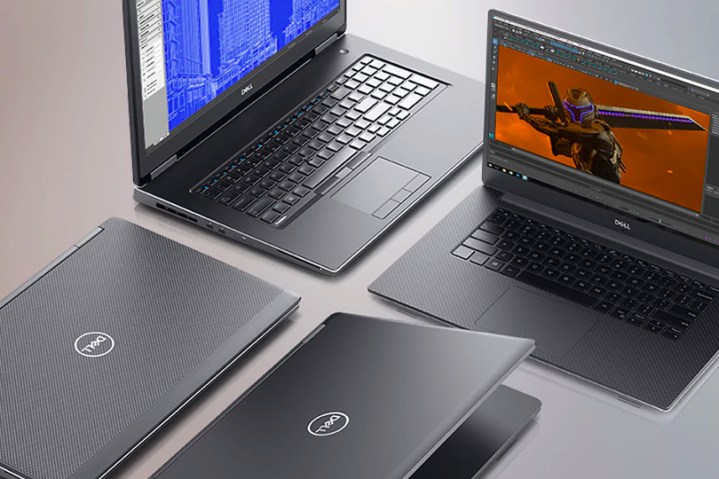
If you’re looking for a new mobile workstation based on Linux, Dell has introduced four new Precision Developer Edition models. The Precision 3530 version is available now while the 5530, 7530, and 7730 models are listed as “coming soon.” All four are based on Intel processors and discrete mobile professional graphics provided by AMD and Nvidia.
With a starting price of $942, the base Precision 3530 configuration defaults to the Intel Core i5-8400H four-core processor, but there are four other options up to the Xeon E-2176M six-core chip. You can also choose to stick with integrated graphics, or Nvidia’s Quadro P600 discrete chip with 4GB of dedicated video memory.
The mobile workstation’s display measures 15.6-inches with options for touch input, and resolutions of 1,366 x 768 (default) or 1,920 x 1,080. The screen you pick will ultimately lock down other aspects of the configuration, such a color gamut range, WWAN support (or lack thereof), and the type of built-in camera. It’s backed by one of three battery options: a 68WHr fast-charging model, a 68WHr “long life cycle” version, and a 92WHr fast-charging edition.
Other ingredients thrown into the mix include DDR4 system memory spanning 4GB to 16GB (2,400MHZ or 2,666MHz), and up to two storage devices. The default configuration includes a 500GB 7,200RPM hard drive and no secondary drive, but you can use a hard drive (up to 2TB) or M.2 SSD (256GB) as the primary drive for the operating system, and a hard drive or SSD as the secondary drive for data.
On the connectivity front, this workstation provides a headphone jack, one USB-A port (5Gbps), and a VGA port on the right. On the left you’ll find a USB-C port with optional Thunderbolt 3 support, a USB-A port (5Gbps), an SD card reader, and an optional Smart Card reader. The laptop’s Ethernet and HDMI 2.0 ports are on the back along with a third USB-A port (5Gbps).
Finally, the default configuration includes Wireless AC (867Mbps) and Bluetooth 4.1 connectivity. It’s available worldwide now sporting Ubuntu 16.04 LTS although it’s certified for Red Hat Enterprise Linux version 7.5.
As for the other three models coming soon, the Precision 5530 will sport a 15.6-inch screen in a 14-inch chassis. It will support next-generation graphics up to Nvidia’s Quadro P2000 discrete graphics, eighth-generation Intel Core processors, and “next generation” Intel Xeon processors. Memory will consist of up to 32GB (2,666MHz) while storage options range up to a 4TB SSD.
Meanwhile, the 15-inch Precision 7530 mobile workstation will support eighth-generation Intel Core and Xeon processors, up to 128GB of memory at 3,200MHz, and discrete graphics from AMD (Radeon WX) and Nvidia (Quadro). This laptop will even handle up to 6TB of storage on a PCIe-based SSD.
Finally, the 17-inch Precision 7730 boasts a thin and light form factor for its size sporting eighth-generation Intel Core and Xeon processors. It too will support up to 128GB of memory at 3,200MHz, but a larger maximum storage capacity of 8TB. All three upcoming workstations will ship with Ubuntu 16.04 LTS already installed.
Editors' Recommendations
- Dell’s new Latitude Detachable outdoes the Surface Pro in more ways than one
- Dell unveils a new XPS 13, and it’s now way more powerful


